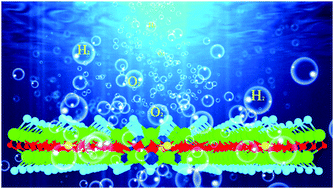Mohammed M. Obeid, C. Stampfl, A. Bafekry, Z. Guan, H. R. Jappor, C. V. Nguyen, M. Naseri, D. M. Hoat, N. N. Hieu, A. E. Krauklis, Tuan V. Vu and D. Gogova
Nonmetal doping is an effective approach to modify the electronic band structure and enhance the photocatalytic performance of bismuth oxyhalides. Using density functional theory, we systematically examine the fundamental properties of single-layer BiOBr doped with boron (B) and phosphorus (P) atoms. The stability of the doped models is investigated based on the formation energies, where the substitutional doping is found to be energetically more stable under O-rich conditions than under Bi-rich ones. The results showed that substitutional doping of P atoms reduced the bandgap of pristine BiOBr to a greater extent than that of boron substitution. The calculation of the effective masses reveals that B doping can render the electrons and holes of pristine BiOBr lighter and heavier, respectively, resulting in a slower recombination rate of photoexcited electron–hole pairs. Based on the results of HOMO–LUMO calculations, the introduction of B atoms tends to increase the number of photocatalytically active sites. The top of the valence band and the conduction band bottom of the B doped BiOBr monolayer match well with the water redox potentials in an acidic environment. The absorption spectra propose that B(P) doping causes a red-shift. Overall, the results predict that nonmetal-doped BiOBr monolayers have a reduced bandgap, a slow recombination rate, more catalytically active sites, enhanced optical absorption edges, and reduced work functions, which will contribute to superior photocatalytic performance.


